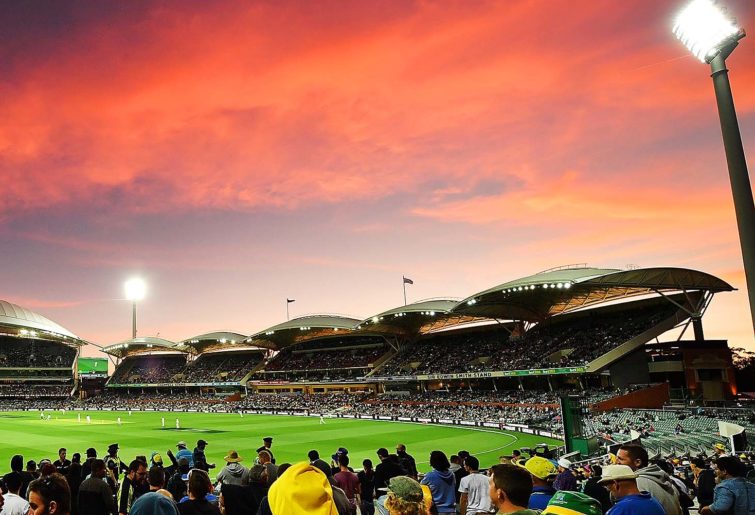Adam Curran
new author
Roar Rookie
I would love to see my home country, Australia, host a World Cup. It could potentially be done with New Zealand or another nearby country.
If it were to be in just Australia, it would be good to host matches in all the state capitals, and a few other cities. In order to reach FIFA’s minimum capacity requirement of 40,000, stadiums would need to be upgraded.
Eight venues could do the trick, with one in each major city, however larger cities such as Sydney and Melbourne could use two stadiums.
Accor Stadium, Sydney (110,000*)
MCG, Melbourne (100,000)
Optus Stadium, Perth (61,000)
Adelaide Oval, Adelaide (53,500)
Suncorp Stadium, Brisbane (52,500)
GIO Stadium, Canberra (40,000*)
Tasmania Stadium, Hobart (40,000^)
Territory Football Stadium, Darwin (40,000^)
*to be upgraded
^to be built
Other stadiums could include:
Robina Stadium, Gold Coast
McDonald Jones Stadium, Newcastle
Kardinia Park, West Melbourne
Allianz Stadium, Sydney
A new stadium could be built in Canberra closer to the city. An idea could be to build one on the eastern side of Commonwealth Park. This would allow for a stadium near the foreshore of the lake, with views across to Parliament House and museum district.
One downside about an Australian World Cup could be the fact that most the large stadiums down under are circular, such as MCG, Optus Stadium, and Adelaide Oval. This problem could be left alone, or fixed by adding retractable seating or upgrading or building new rectangular stadiums in these cities.

(Photo by Daniel Kalisz – CA/Cricket Australia via Getty Images/Getty Images)
A solution for the MCG is adding retractable seating. There have been talks for a while of refurbishing the Southern Stand. Five thousand retractable seats can be added to the Shane Warne Stand and the Members Stand. This would elevate the capacity to 110,000, and make it a better venue for football for the World Cup and all football in Melbourne.
Optus Stadium already has a total of 10,000 retractable seats for rectangular sports. By utilising this resource for the World Cup, the stadium’s capacity can be upgraded to 71,000.
However, Adelaide Oval has no retractable seating. It is best to leave AO alone. South Australia’s premier rectangular stadium is currently Coopers Stadium, home to Adelaide United. This stadium probably can’t be renovated to bigger capacity, as it is on a small plot of land.
SA Athletics Stadium currently gets little use and is the perfect site for an upgraded stadium for the World Cup. SA Athletics Stadium however has the space, ability and reason to upgrade. Upgrades could consist of removing the track, adding seating on all sides of the pitch and adding renovations to the pre-existing stand.
This can all be done while still preserving the current hill that is there. The stadium can be renovated to 45,000 capacity, and could be called South Australia Stadium or any sponsor name.
Hobart
Tasmania is yet to have a proper football stadium. A new 40,000-plus-capacity ground can be built in Hobart to facilitate for the World Cup.
Cornelian Bay North of Hobart’s CBD would be the perfect place to house a World Cup stadium, as it is close to the CBD of Hobart and roughly 20 minutes from Hobart International Airport. With a position on the River Derwent, it is a stunning location for a World Cup stadium. A glass facade could be constructed on the riverside to view the river.
Darwin
Darwin, and the Northern Territory as a whole lack good stadium infrastructure, with the state’s largest sporting venue only having a capacity of 12,000. A new stadium could be built on the current site of Larrakia Park (Darwin Football Stadium) in the Marrara Sports Complex which is located next to Darwin International Airport and just 12 minutes from Darwin CBD.
The stadium could be constructed to a seating capacity of 40,000 or more, and have a roof to keep out Darwin’s blazing sun and heat. The stadium could potentially be the home of a Northern Territory A-League team in the future.
Canberra
It would be unnecessary to construct a new stadium in Australia’s capital, and simply upgrade the existing GIO Stadium in the Australian Institute of Sport (AIS) by adding extra levels of seating on the two goal sides, American-style. By adding roughly 8000 seats on each of these sides, the capacity can be upgraded to 41,000.
Accor Stadium upgrade
Accor Stadium is currently not a world-class venue. It’s ugly, dirty, and not a pleasant stadium. Additions could include a white roof, similar to Allianz Stadium in Sydney and Al Janoub Stadium in Qatar. The upgrades would include equal level seating on all sides, with a new roof and new seats.
To bring the capacity from 82,000 to 110,000, around 10-11,000 seats will need to be added to the goal sides, and a few thousand extra seats on the sideline stands, making the stadium completely level.
Final stadium list
Accor Stadium, Sydney (110,000)
MCG, Melbourne (110,000)
Optus Stadium, Perth (71,000)
Suncorp Stadium, Brisbane (52,500)
Credit Union Stadium, Adelaide (45,000)
GIO Stadium, Canberra (41,000)
Derwent Stadium, Hobart (40,000)
Larrakia Park, Darwin (40,000)
Key matches
Opening match: Optus Stadium
Third-place playoff: MCG
Final: Accor Stadium